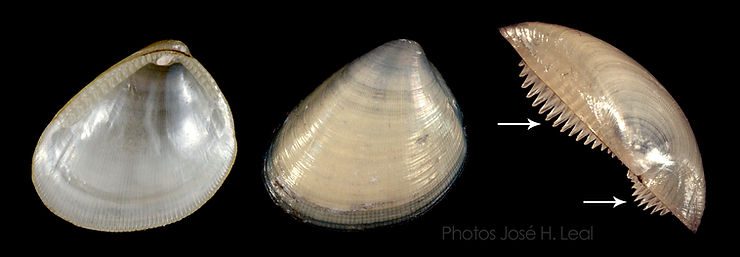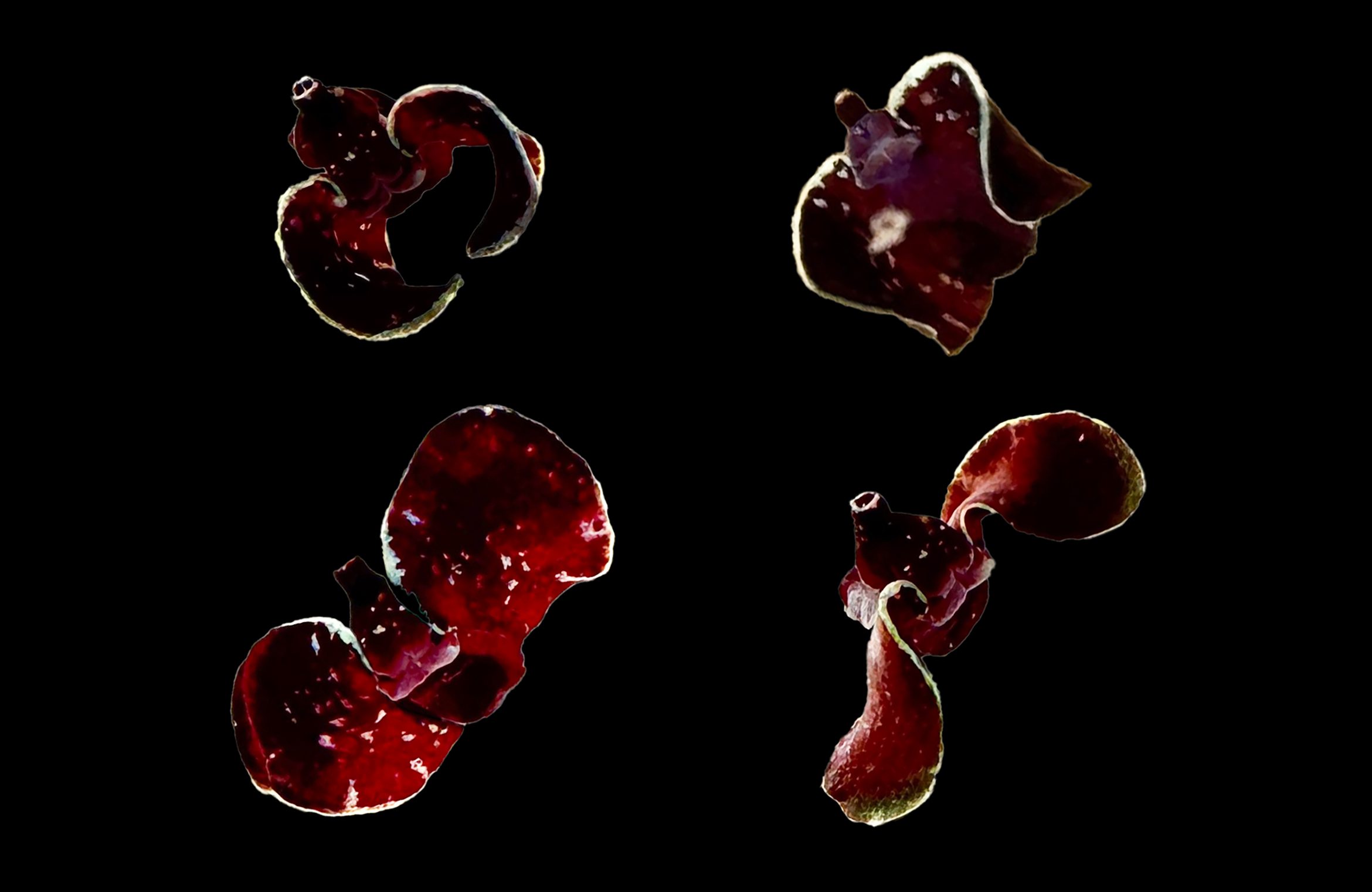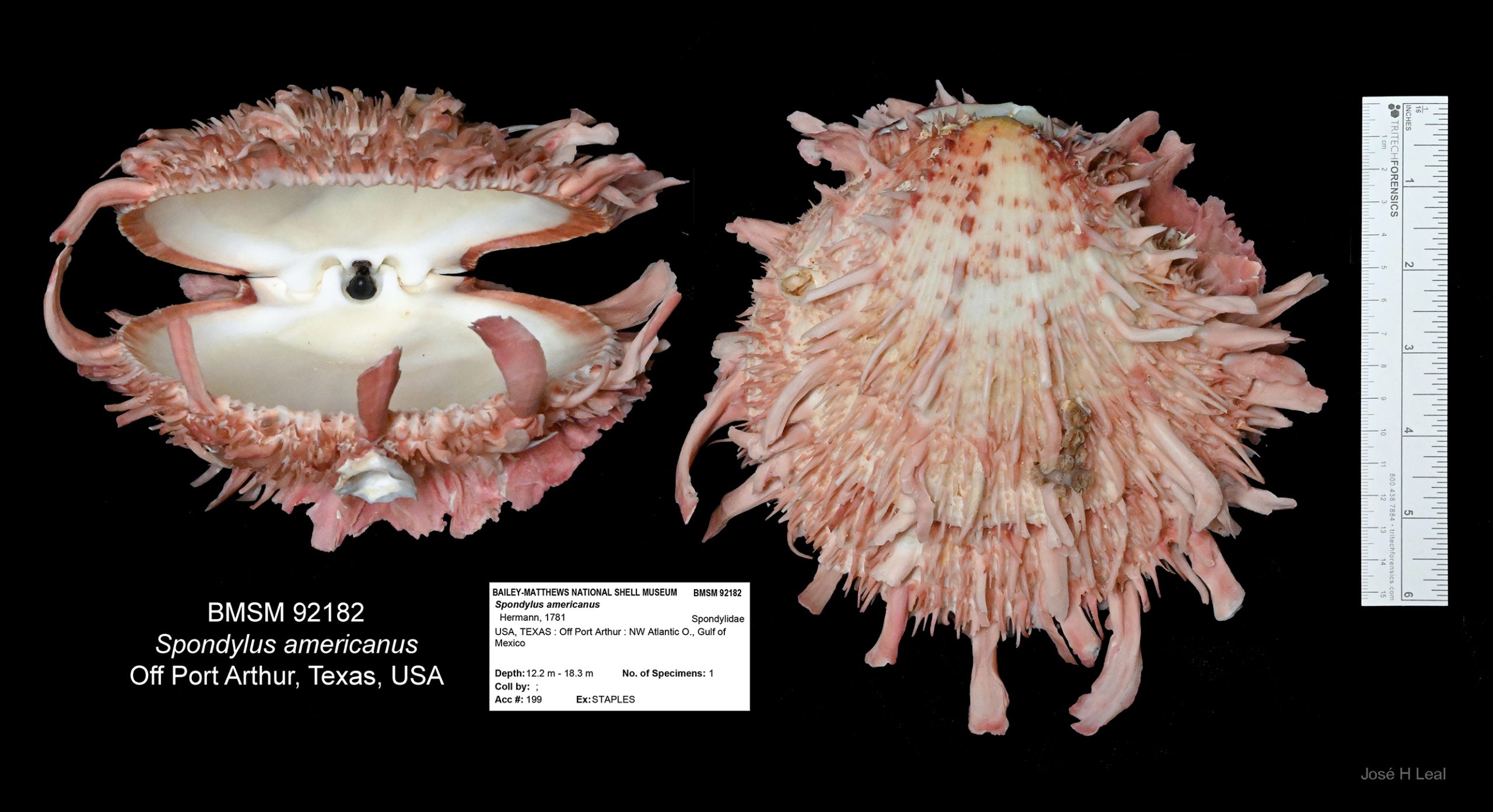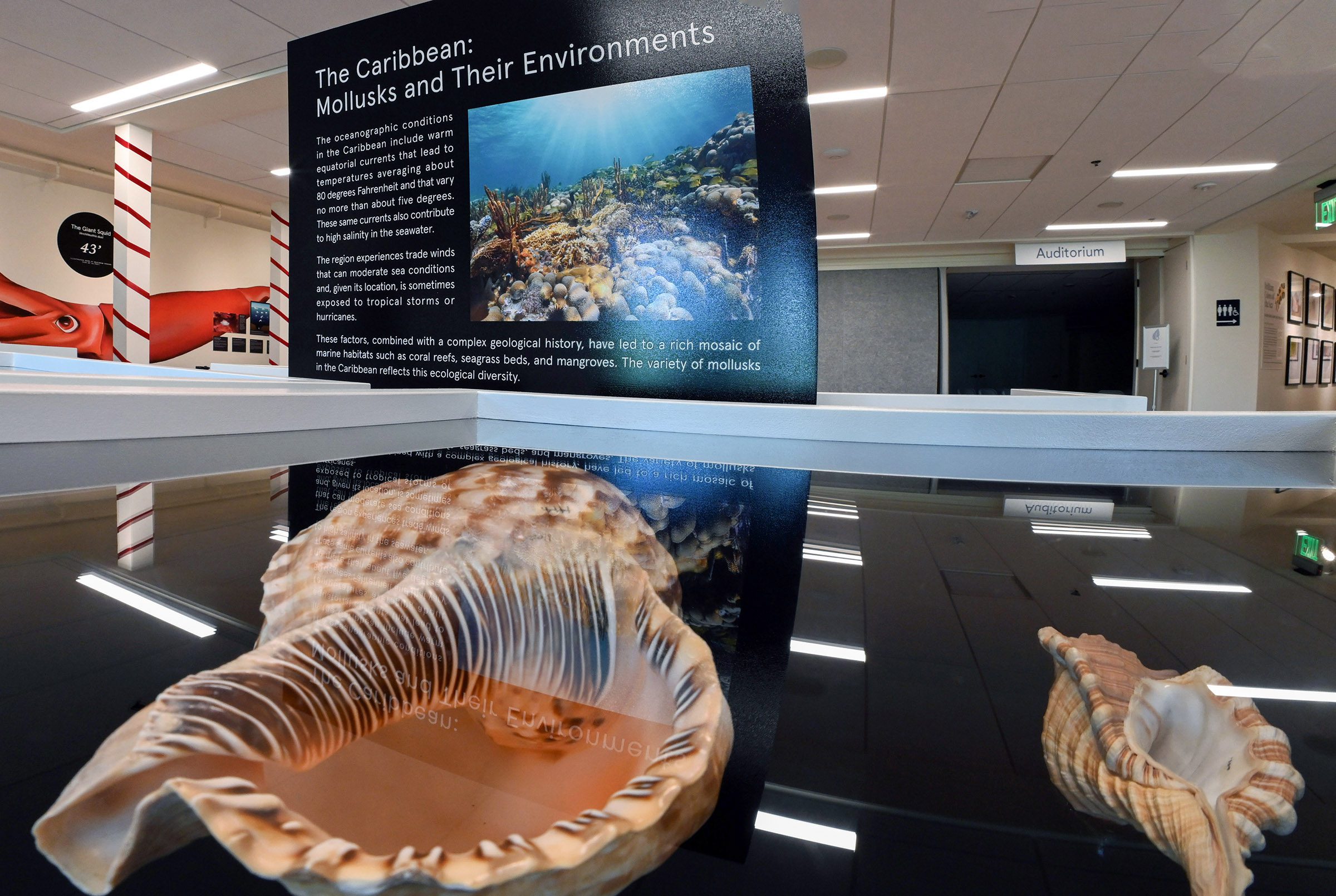The Atlantic Nut Clam, Nucula proxima Say, 1822, lives locally on muddy-sand bottoms. Most bivalves (Clams, Mussels, Oysters, etc.) are filter-feeders, “sieving” the water to collect their microscopic food (microalgae and other forms of phytoplankton). Nut Clams (family Nuculidae), on the other hand, are deposit-feeding bivalves, scooping up the film of decomposing organic matter and bacteria that accumulates on the surface of the sea floor. They do so using tentacle-like structures called labial palps. Nut Clams have a noticeable inner shell layer of mother-of-pearl (nacre), and their shell hinge teeth (see picture) are shaped like interlocking combs.

The arrows on the photo on the right point to the hinge teeth of the Atlantic Nut Clam. Photos by José H. Leal.


